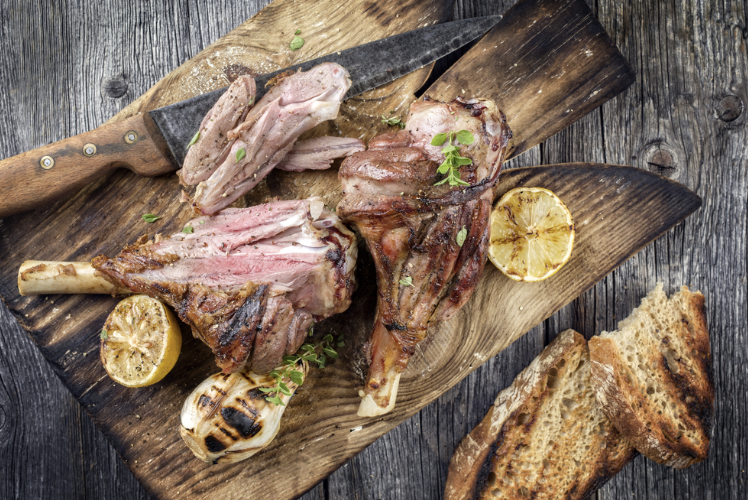
Ever wonder why children collect chocolate inside plastic eggs on Easter? Or the roots behind the roasted meats on the holiday table? In the Roman Catholic faith, similar to many other sectors of spirituality, every food tells a story.
“For Italians, it’s always all about the food,” says Mary Ann Cricchio, owner of Da Mimmo Restaurant in Little Italy. “We eat when we’re happy, we eat when we’re sad. We eat all the time. And Easter is right there with Christmas, it’s a day for the family to be together around the table.”
The restaurant, and its surrounding community, is commemorating the Holy Week leading up to Easter Sunday with special programs at St. Leo’s Church and, of course, traditional holiday cuisine. Arguably the most important for Italians is the Easter lamb, which symbolizes the Lamb of God.
“Some people serve ham, but in Italian households the entree on the table is always lamb,” Cricchio says. “Easter Sunday is traditionally a big meat day because we haven’t eaten meat on any Friday during Lent leading up to it, especially on Good Friday.”
For Easter Sunday at Da Mimmo, chef Masood Masoodi prepares lamb from Southern Australia—which he marinates with garlic, rosemary, and sage for 12-15 hours. Then he grills the meat over an open fire and tops it with a sauce made from the leftover juices, flour, butter, onion, brandy, sherry, and red wine. He serves the holiday dish alongside green vegetables like Brussels sprouts or broccoli rabe.
“In Italy, colors have a lot of significance,” says Rosalinda Mannetta, a longtime instructor at Little Italy’s Pandola Learning Center. “Green means hope. I remember on Easter Monday, or Pasquetta, my mother would make these beautiful frittatas with asparagus. The green represents the hope of spring.”
Bread is another important part of the Italian Easter meal. Mannetta—who grew up in Little Italy but lived with her family in Sardinia for many years—explains that all of the regions in Italy make their own types of Easter bread. Her family, for example, makes a braided bread similar to a Jewish challah, which can be flavored with lemon or Mediterranean anise seeds. Growing up, she also remembers making hundreds of traditional ricotta pies for the holiday. Some of which were sweet, and others were filled with savory ingredients like salami and cheese.
“From small town to small town, there are so many different variations,” Mannetta says. “As children, we would exchange breads with neighbors from different regions. We would take one of theirs and give one of ours. They were all different variations on one delicious theme.”
An Italian bread that Cricchio enjoys most is the classic Colomba di Pasqua—a sweet loaf baked in the shape of a dove to represent the Holy Spirit. Similar to Christmas panettone, the bread is typically filled with nuts and dried fruit.
When it comes to sweets, Cricchio also likes to celebrate with Uova di Pasqua—large decorative chocolate eggs that typically come with a special trinket or toy inside for children. The chocolate iterations, which symbolize rebirth and renewal for the holiday, became popular throughout Europe at the end of the 19th century. Though Cricchio used to have to carefully transport the eggs back from Italy, she recently found an American distributor that has the desserts imported, and now accepts orders for them at Da Mimmo.
“Italians are very strong in their faith,” she says. “And the food is a celebration of that. It’s really what Easter is all about.”
To continue Da Mimmo’s Easter traditions, Cricchio and Masoodi—who habitually take groups on summer tours of the Amalfi Coast—are in the midst of planning a special trip to the city of Ravello next year, where performers reenact the story of the holiday in the streets during Holy Week.
But, for Italians, the spirit of the holiday transcends merely one week out of the year.
“I was brought up on proverbs,” Mannetta says with a laugh. “And in Italian there’s a saying that goes, ‘Felice come una pasqua’ which means, ‘Happy as Easter.’ So no matter what time of year, if you see someone that is very happy, you say ‘Felice come una pasqua.’ It’s a very joyous time.”
